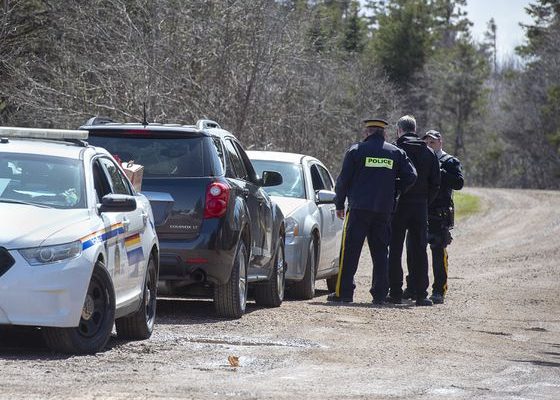Nova Scotia/CMEDIA: The final report into Nova Scotia’s April 2020 mass shooting has been dominated by a list of failures by Nova Scotia RCMP leadership and policing systems, media reports said.
The timeline of events of the inquiry, determined through interviews, medical records, and forensic evidence, some of it, found by members of the public indicated the gunman Gabriel Wortman — who with 13-hour killing rampage on April 18 and 19 took the lives of 22 people, including a pregnant mother — killed his first 13 victims in the Portapique, N.S., area within a 45-minute period the night of April 18. .
The police had been eluded continuously into the next day by Dressed like a police officer and driving his replica RCMP cruiser, when he killed another nine people, including an RCMP officer in an exchange of gunfire.
The Mass Casualty Commission’s final report released at a public event in Truro, N.S. Thursday, after months of public hearings, hours of testimony, and thousands of pages of evidence, is filled with harsh criticisms of the RCMP’s actions before, during, and after the tragedy.
From the tragedy’s outset, the RCMP failed to fully recognize the important role of eyewitness accounts on the ground in Portapique the night of April 18, wrote the commissioners.
That information, it says, wasn’t conveyed to responding police officers over the hours that followed, nor to the public.
It was reportedly noted by the commissioners that many residents of Portapique, including some of those killed, “put themselves in harm’s way in their attempts to ensure the safety of their neighbours,” as they left their homes to investigate the fires and explosions happening in the community.
The report said that the RCMP “underestimated” both the role of community members as well as their eyewitness accounts, which not only identified the gunman, but provided descriptions of his replica RCMP cruiser.
RCMP critical incident commanders were criticized by the report for failing to establish sufficient containment of the Portapique area, as the killer escaped the area using a rough dirt road next to a blueberry field.
The report says, “the RCMP had not prepared for how to best notify community members and execute a large-scale evacuation of civilians from a hot zone while and active threat was in progress.”
“A significant failure,” write the commissioners, “to implement the priority of preserving life.”
According to the commission, however, “Alert Ready was the best available tool to warn the Nova Scotia public.”
The RCMP also did not conduct a systematic search of Portapique for additional fatalities until sometime after 5:30 p.m. on April 19 and failed to give timely notifications to families next-of-kin.
It was also determined by the commissioners that contrary to national RCMP policy, in April 2020 the Bible Hill detachment had no emergency operational plan neither H Division had no violent crime-in-progress emergency operational plan.
The lack of public communication by police meant members of the public were sharing messages about what was happening, particularly the fires in Portapique, as early as 11 p.m. April 18.
“We conclude,” write the commissioners, “that the critical incident command did not seriously consider alternatives to the belief that the perpetrator was still in Portapique.”
That, found the MCC, contributed to the force’s lack of preparedness when Wortman would emerge and begin killing again that Sunday morning.
Challenges of the RCMP’s communication and co-ordination continued into the second day, wrote the commission disbling the RCMP’s ability to respond to the mass casualty in a co-ordinated and strategic fashion.
The information from the killer’s common-law-spouse, Lisa Banfield, indicating Wortman was driving his mock RCMP cruiser, came to investigators around 7:30 a.m. Sunday.
The RCMP didn’t notify the public of that fact, and the fact Wortman was wearing what looked like a police uniform, until a tweet at 10:17 a.m. deprived Nova Scotians of the opportunity to protect themselves.
The commissioners wrote that (RCMP) moved slowly to convey key information and their efforts were insufficient and too late.
The commissioners added that even that key informationalso was neither shared quickly nor accurately by commanding officers with the senior leadership at the Nova Scotia or national headquarters, or with other first responders in the province.
In the days, weeks, and months following the tragedy, it was said mby the commission the Nova Scotia RCMP and Nova Scotia Victim Services were “unprepared” for the need for support for survivors and family members.
Failures by both police and the provincial government, the commissioners pointed, in providing families with timely information and proper mental health services.
Overall, say the commissioners, the mass shooting was a serious blow to the entire province.
“Nova Scotians’ sense of safety was rocked,” they write.
In one of their most critical condemnations, the commissioners take aim at RCMP top brass for neglecting to review the force’s own actions in the aftermath of the tragedy.
“More than two years after the event,” they write, “RCMP leadership has done very little to systematically evaluate its critical response to the deadliest mass shooting in Canada’s history.”
#NSmassshooting; #NovaScotiaRCMP; #TheMassCasualtyCommission





